Choosing the right handlebar can significantly enhance your cycling experience, providing comfort, control, and efficiency. With options like the high-quality carbon bike handlebars from Trifox, it's essential to understand which type suits your riding style best. Here's a guide to help you make the perfect choice.
1. Identify Your Riding Style
Your riding style is the first consideration when selecting a handlebar. Are you into road racing, mountain biking, or casual commuting? Each style demands different handlebar characteristics for optimal performance.
Road Racing: For speed and aerodynamics, drop bars are usually preferred. They offer multiple hand positions and reduce drag;Mountain Biking: Flat or riser bars are ideal for control and stability on rugged trails;Commuting: Comfort and ease of use are key, making flat bars or cruiser bars a good choice.
2. Consider the Material
Carbon handlebars, like those offered by Trifox, provide several advantages. They are lightweight, strong, and absorb vibrations better than aluminum, offering a smoother ride. This is particularly beneficial for long-distance cyclists and competitive racers.
3. Understand Handlebar Dimensions
Width: A wider handlebar offers more control, especially in technical terrains, while a narrower bar can be more aerodynamic;Drop and Reach: For drop bars, consider the drop (vertical distance) and reach (horizontal distance). A deeper drop allows for a more aerodynamic position, while a shorter reach is more comfortable for casual rides;Rise: For flat and riser bars, the rise (height difference between the center of the bar and the ends) affects your riding posture. More rise means a more upright and comfortable position.
4. Test Different Shapes
Handlebars come in various shapes to suit different preferences:
Drop Bars: Ideal for road cyclists needing aerodynamic positions.Flat Bars: Common in mountain bikes for improved control;Riser Bars: Provide a higher position, enhancing visibility and comfort;Bullhorn Bars: Offer an aggressive position suitable for time trials and track racing.
5. Ergonomics and Comfort
Pay attention to ergonomics. Some handlebars have ergonomic bends or specific shapes designed to reduce fatigue and increase comfort on long rides. Carbon bars, such as those available from Trifox, often include these features, making them a great investment for serious cyclists.
6. Installation and Adjustments
Ensure proper installation and adjustment. Handlebars need to be securely fitted and adjusted to your preference. Seek professional help if necessary to avoid any mishaps that could affect your ride quality or safety.
Conclusion
Choosing the perfect cycling handlebar is crucial for enhancing your cycling experience. With options like the Trifox carbon bike handlebars, you can find the balance between weight, strength, and comfort tailored to your riding style. Take the time to assess your needs, try different options, and invest in the best handlebar for a more enjoyable and efficient ride.
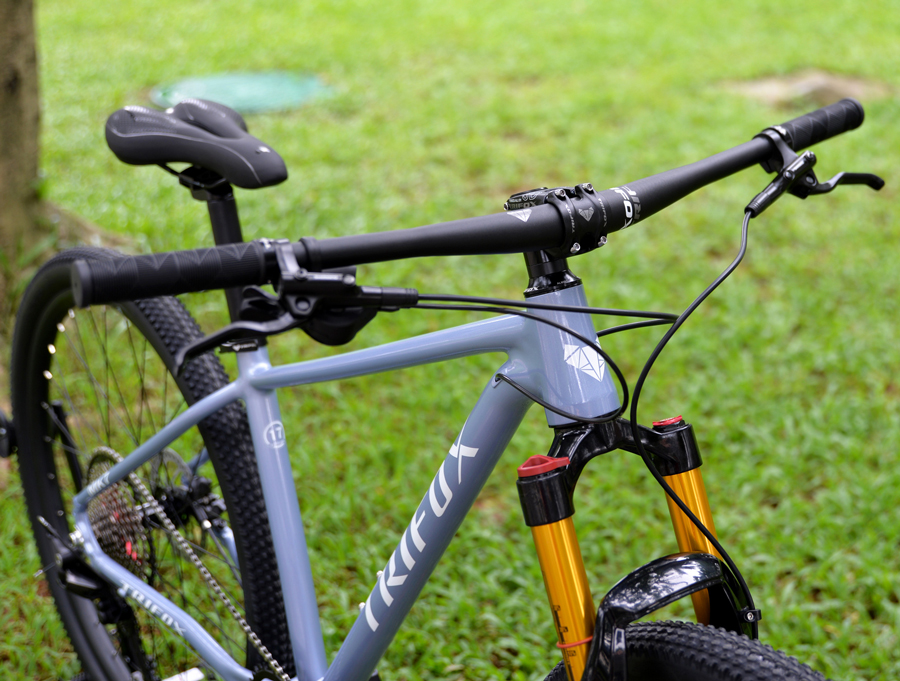
Explore Trifox's range of carbon bike handlebars here.
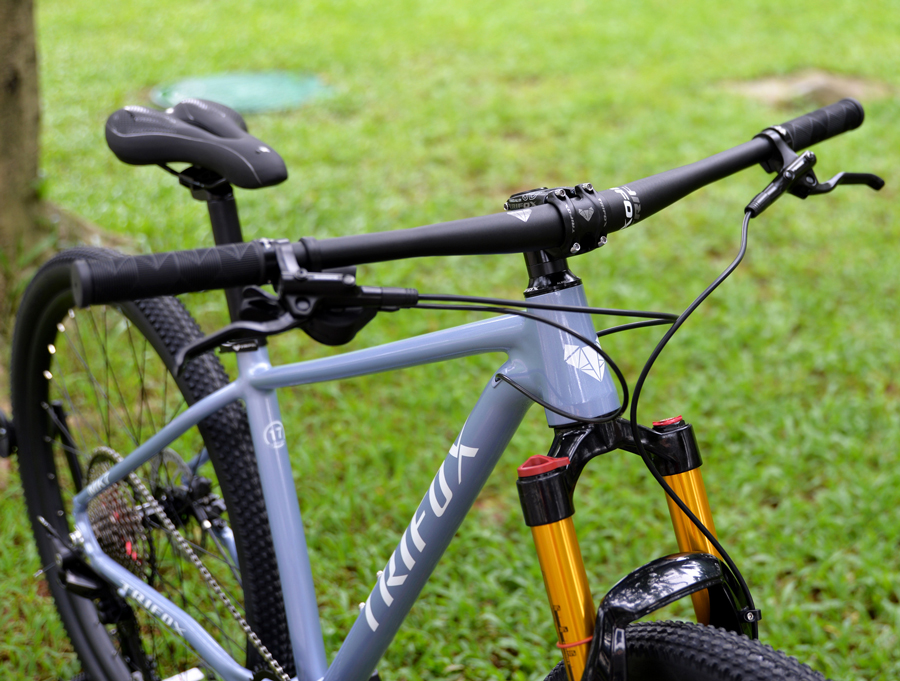
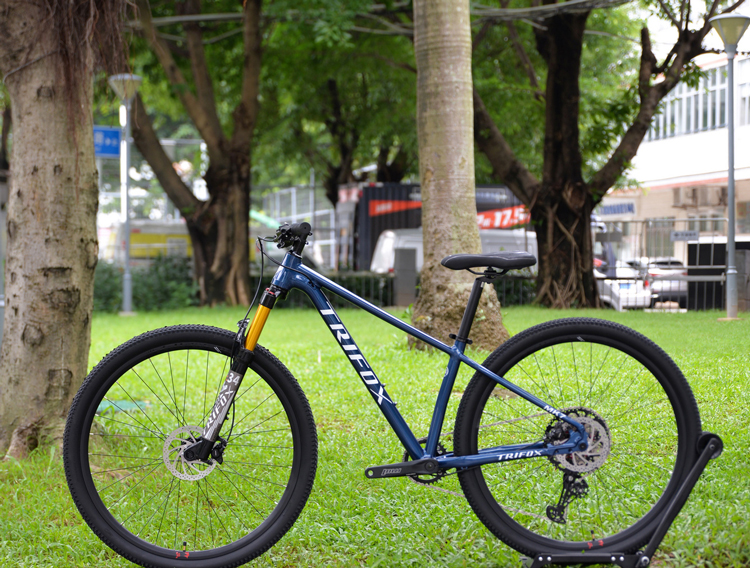
Conquering mountain trails demands not only skill but also the right equipment. The Trifox PeakTrail Xtreme bike, with its top-tier components and design, is engineered to help you tackle the roughest terrains with confidence and style. Here's how you can master mountain trails with this exceptional bike.
1. Understand Your Equipment
The PeakTrail Xtreme bike features a TRIFOX suspension fork, which plays a crucial role in handling the various obstacles you'll encounter on the trail. Its butted aluminum frame, combined with hydroformed top and downtubes, offers both durability and a sleek appearance. This frame is designed for higher deformation resistance and tensile strength, ensuring reliability on challenging terrains.
2. Optimize Your Gear Shifting
Equipped with the SHIMANO DEORE M6100 12-speed Groupset, the PeakTrail Xtreme provides a wide range of gears to handle steep climbs and fast descents efficiently. Knowing when and how to shift gears can significantly impact your ride. Practice smooth transitions between gears to maintain momentum and avoid unnecessary strain on your bike’s components.
3. Leverage the 1x Drivetrain
The 1x Shimano drivetrain on the PeakTrail Xtreme simplifies gear shifting and reduces the chances of chain drops, allowing you to focus more on the trail ahead rather than managing multiple gears. This simplicity doesn’t compromise performance but rather enhances reliability and ease of use, especially useful in technical sections.
4. Utilize the Lightweight Design
One of the standout features of the PeakTrail Xtreme is its lightweight construction, which allows for faster acceleration and easier maneuverability. This is particularly advantageous when navigating sharp turns or climbing steep inclines. Use this to your advantage by practicing quick sprints and agile movements.
5. Regular Maintenance
Maintaining your PeakTrail Xtreme bike is essential for optimal performance. Regularly check the suspension fork, drivetrain, and brakes. Proper maintenance ensures that your bike remains reliable and ready for any trail.
6. Benefits Beyond the Bike
When you purchase the PeakTrail Xtreme bike, Trifox offers top-quality items, 24/7 live chat support, fast and reliable delivery options, and secure payment methods. These additional benefits ensure a seamless purchasing experience, allowing you to focus on enjoying your ride.
Mastering mountain trails requires both skill and the right bike. The PeakTrail Xtreme, with its robust features and performance-oriented design, is your ideal partner for any mountain adventure. Start exploring with confidence and elevate your riding experience today.
Learn more and get your PeakTrail Xtreme bike here.
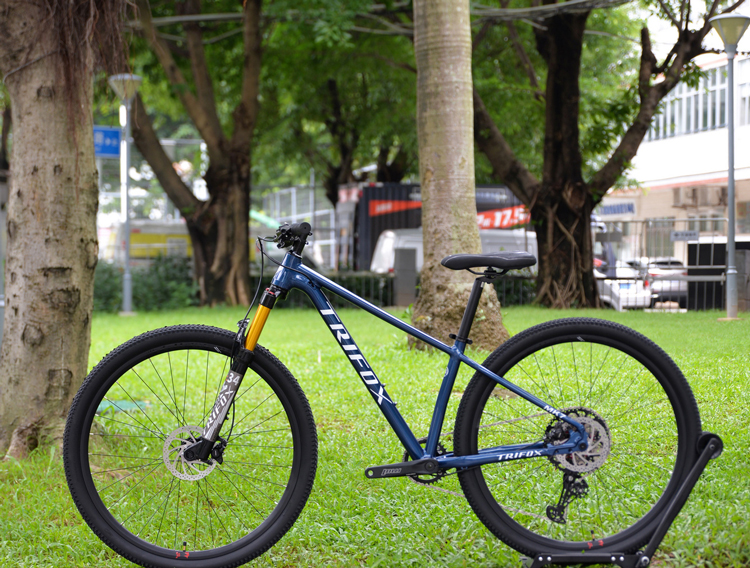
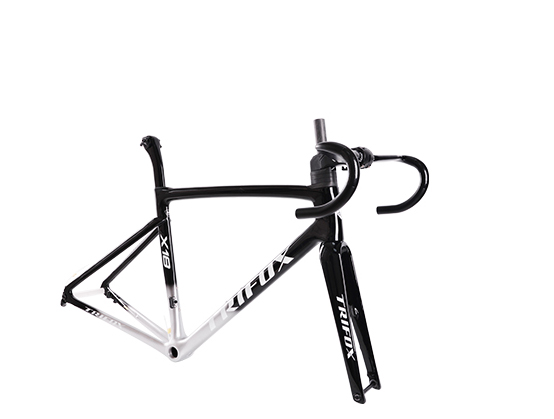
Optimizing your ride with an aero bike can make a significant difference in your cycling performance, especially if you're aiming for speed and efficiency.
Understanding Aero Bikes
Aero bikes are designed to reduce aerodynamic drag, allowing you to cut through the air more efficiently. They feature streamlined frames, integrated components, and often deeper wheel rims. Here's how to optimize every aspect of your aero bike for maximum performance:
1. Perfect Your Bike Fit
A proper bike fit is crucial. Visit a professional fitter to ensure your aero bike is adjusted to your body dimensions. A good fit reduces wind resistance and increases comfort, allowing you to maintain an aerodynamic position for longer periods.
2. Choose the Right Wheels
Wheels play a vital role in aerodynamics. Deep-section wheels (50mm-80mm) are ideal for flat terrains and time trials due to their reduced drag. However, they can be susceptible to crosswinds, so consider mid-section wheels (35mm-50mm) for versatility.
3. Optimize Your Riding Position
An aero position minimizes frontal exposure. Lowering your handlebars, tucking your elbows in, and maintaining a flat back can significantly reduce drag. Practice holding this position to improve endurance and efficiency.
4. Use Aero Components
Invest in aero handlebars, stems, and seat posts. These components are designed to slice through the air more effectively than standard parts. Additionally, consider using an integrated cockpit system for seamless airflow.
5. Wear Aerodynamic Gear
Your clothing should be tight-fitting and designed for aerodynamics. Opt for aero helmets, skinsuits, and overshoes to reduce air resistance. Every small improvement can add up to noticeable gains in speed.
6. Maintain Your Bike
Regular maintenance ensures your aero bike performs at its best. Keep the drivetrain clean and lubricated, ensure tires are properly inflated, and check for any signs of wear. Regularly tuning your bike keeps it running smoothly and efficiently.
7. Mind the Accessories
Minimize accessories like saddle bags and bottle cages that can disrupt airflow. Use aero water bottles and mount them strategically to maintain the bike’s streamlined profile.
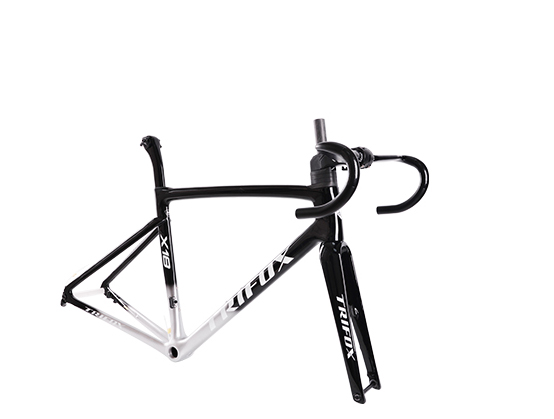
Conclusion
Optimizing your ride with an aero bike involves a combination of proper fit, equipment choices, and riding techniques. By paying attention to these details, you can maximize your efficiency and enjoy faster, more enjoyable rides. Happy cycling!
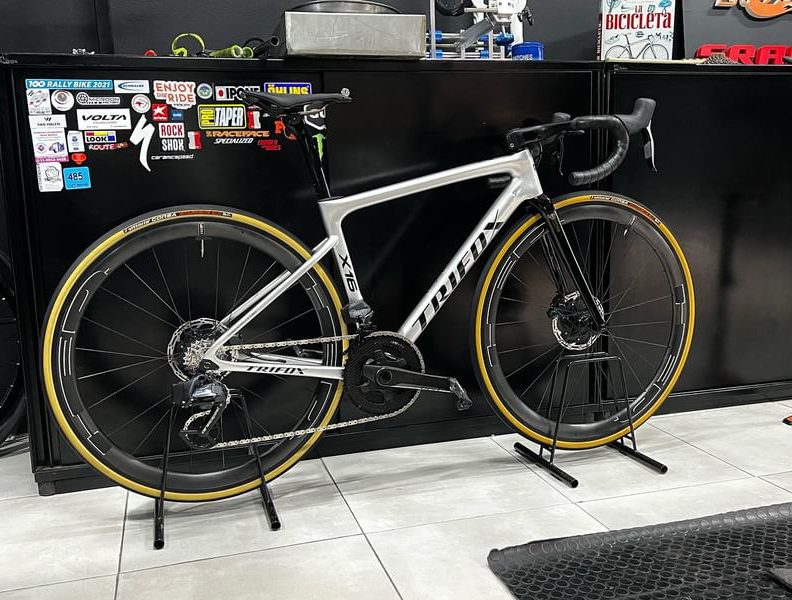
Measuring and adjusting the bottom bracket (BB) height on your road bike is essential for optimizing comfort, efficiency, and performance.
Understanding BB Height
BB height refers to the distance from the ground to the center of the bottom bracket. This measurement impacts your bike's stability, handling, and pedaling efficiency. A lower BB height generally improves stability but may increase the risk of pedal strikes, while a higher BB height offers more clearance but can affect handling.
Measuring BB Height
Tools Needed: Ruler or tape measure, bike stand (optional);Preparation: Place your bike on a flat surface. Ensure the tires are properly inflated and wheels are aligned;Measurement: Measure from the ground to the center of the BB. Note this measurement for reference
Adjusting BB Height
Adjusting BB height involves altering the bike’s components or setup. Here's how:
1. Tire Size
Changing to larger or smaller tires can slightly adjust the BB height. Larger tires raise the BB, while smaller ones lower it. Ensure that any tire changes comply with your bike frame's specifications.
2. Suspension Settings
For bikes with adjustable suspension, altering the suspension settings can impact BB height. Increasing the suspension travel raises the BB, while reducing it lowers the BB. Adjust according to your preferred riding style and terrain.
3. Crank Length
While not directly altering BB height, changing crank length can influence pedal clearance and the overall feel of your ride. Shorter cranks reduce the risk of pedal strikes, effectively “raising” the BB in practical terms.
Final Adjustments and Testing
After making adjustments, take your bike for a test ride. Pay attention to how the changes affect handling, stability, and pedaling efficiency. Fine-tune as necessary to find the perfect balance.
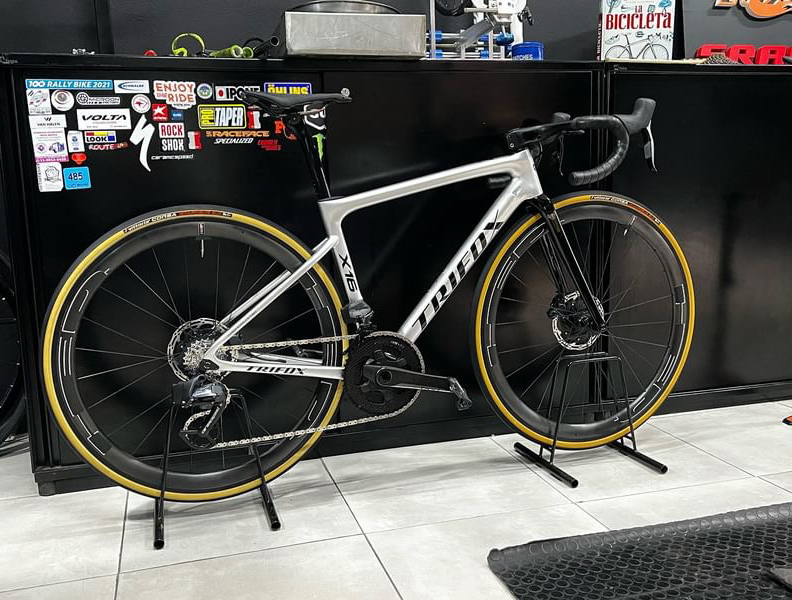
Conclusion
Properly measuring and adjusting your road bike's BB height can significantly enhance your riding experience. Take your time with each step to ensure optimal results. Happy riding!
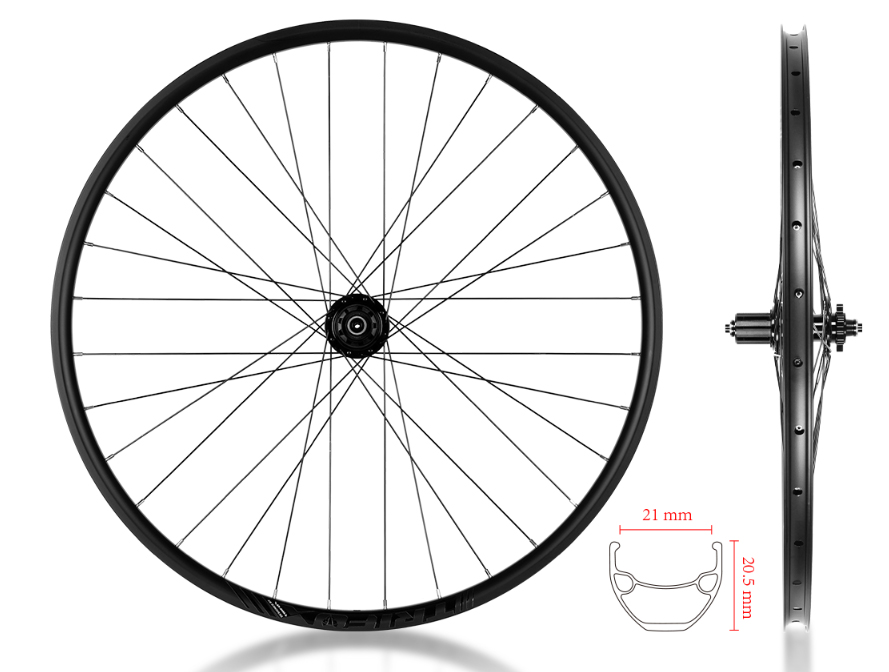
Maintaining your bike tires is essential for a smooth and safe ride. Whether you're a seasoned cyclist or a weekend warrior, knowing how to change and maintain your bike tires can save you time, money, and frustration.
Changing Your Bicycle Tire
Step 1: Remove the Wheel
1. Release the Brakes: Open the brake lever to free the wheel.
2. Loosen the Axle Nuts or Quick Release: Use a wrench or release lever to detach the wheel from the frame.
Step 2: Remove the Old Tire
1. Deflate the Tire: Let out any remaining air.
2. Use Tire Levers: Insert tire levers under the bead of the tire and pry it off the rim.
Step 3: Install the New Tire
1. Check for Debris: Inspect the rim and tire for any debris or sharp objects.
2. Insert the Tube: Slightly inflate the new tube and place it inside the tire.
3. Mount the Tire:Start at one side and work the tire onto the rim using your hands or tire levers.
Step 4: Inflate the Tire
1. Check the Pressure: Inflate the tire to the recommended pressure indicated on the sidewall.
2. Reattach the Wheel: Secure the wheel back onto the frame and close the brake lever.
Maintaining Your Bicycle Tire
Regular Inspection
1. Check for Wear and Tear: Regularly inspect your tires for signs of wear, such as cracks, cuts, or bald spots.
2. Inspect Tread Depth: Ensure the tread depth is adequate for good traction.
Proper Inflation
1. Monitor Tire Pressure: Check tire pressure before each ride. Under-inflated tires can cause poor handling and increased wear.
2. Use a Quality Pump: Invest in a reliable pump with a built-in pressure gauge for accurate readings.
Cleaning and Storage
1. Keep Tires Clean: Wipe down your tires after rides to remove dirt and debris.
2. Proper Storage: Store your bike in a cool, dry place away from direct sunlight to prevent tire degradation.
Rotating Your Tires
To ensure even wear, consider rotating your tires every few months, especially if you notice uneven tread wear. Swap the front and rear tires, as the rear tire typically wears out faster due to the additional weight and force.
Dealing with Flats
1. Patch Kits: Carry a patch kit and a mini pump on your rides to fix flats on the go.
2. Spare Tubes: Always have a spare tube in case of a major puncture.
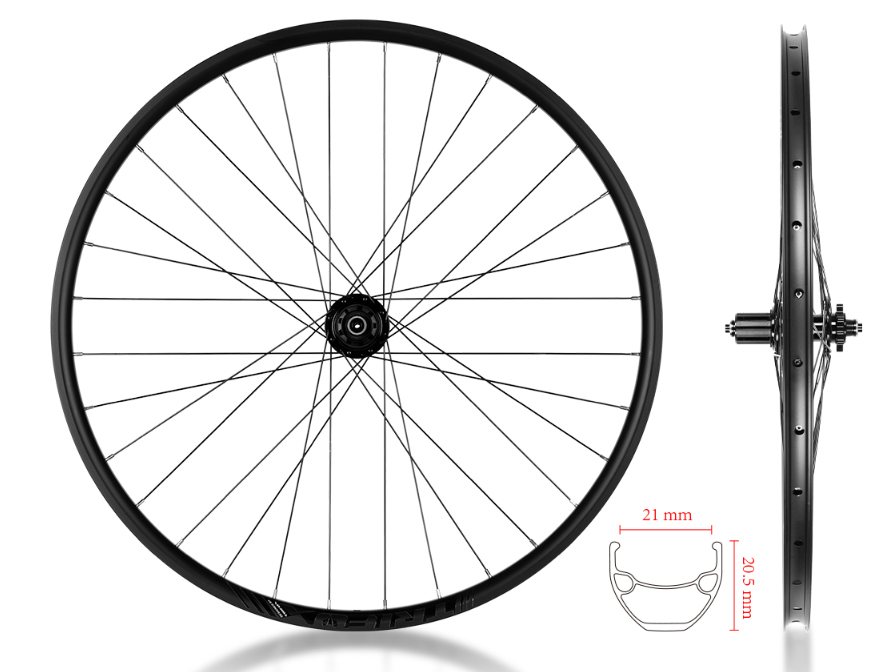
Advanced Maintenance Tips
1. Use Tire Sealant: For tubeless tires, use sealant to prevent flats.
2. Align Your Wheels: Make sure your wheels are properly aligned to avoid uneven tire wear.
3. Check Spokes and Rim: Regularly inspect spokes and rims for damage that could affect tire performance.
By following these steps, you'll ensure your bike tires provide a smooth and reliable ride. Regular maintenance not only extends the life of your tires but also enhances your overall cycling experience. Happy riding!
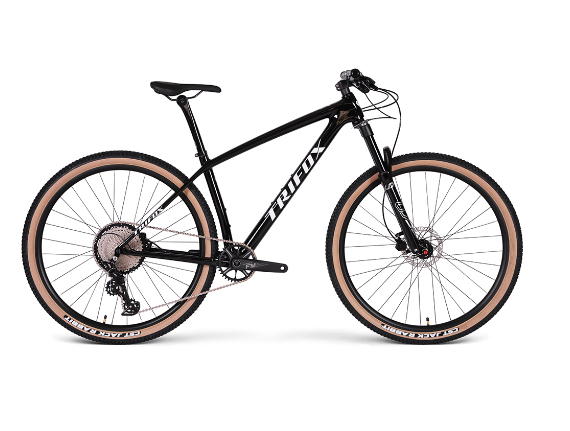
Selecting the perfect racing bike frame is a crucial step toward optimizing your cycling performance. The frame is the backbone of your bike, influencing everything from weight and aerodynamics to comfort and handling. With numerous options available, making the right choice can be daunting.
1. Material Matters
The material of the bike frame significantly affects its performance characteristics. Here are the most common materials used in racing bike frames:
Carbon Fiber
Carbon fiber is the material of choice for high-performance racing bikes. It offers an excellent strength-to-weight ratio, meaning it is both lightweight and incredibly stiff. This stiffness ensures efficient power transfer from the pedals to the wheels, enhancing speed. Additionally, carbon fiber can be molded into aerodynamic shapes, further reducing drag.
Aluminum
Aluminum frames are known for their affordability and durability. While not as light or stiff as carbon fiber, modern aluminum frames can still provide excellent performance. They are more resistant to impact damage, making them a good option for riders who prioritize robustness.
Titanium
Titanium frames combine the best qualities of aluminum and steel. They are lightweight, corrosion-resistant, and offer a smooth ride due to their natural flex. However, titanium frames are typically more expensive, making them a premium choice for serious cyclists.
Steel
Steel frames are less common in racing due to their heavier weight. However, they offer unmatched durability and a comfortable ride, absorbing road vibrations effectively. Steel frames are often favored for long-distance touring rather than competitive racing.
2. Frame Geometry
The geometry of the bike frame influences how the bike handles and fits the rider. Key geometric aspects to consider include:
Top Tube Length
The top tube length affects the reach to the handlebars. A longer top tube provides a more stretched-out, aerodynamic position, while a shorter top tube offers a more upright, comfortable posture.
Head Tube Angle
A steeper head tube angle (73 degrees or more) results in quicker, more responsive steering, ideal for racing. A slacker angle provides more stability, which can be beneficial for endurance rides.
Seat Tube Angle
The seat tube angle determines the position of the saddle relative to the bottom bracket. A steeper angle (73-75 degrees) supports a forward, aggressive riding position, optimizing power output and aerodynamics.
Bottom Bracket Height
A lower bottom bracket enhances stability, especially at high speeds and during cornering, while a higher bottom bracket provides better ground clearance for rough terrains.
3. Aerodynamics
Aerodynamics play a critical role in racing performance. An aerodynamically optimized frame reduces air resistance, allowing you to maintain higher speeds with less effort. Features to look for include:
Narrower Tubing: Slender frame tubes reduce aerodynamic drag.Integrated Cables: Internal cable routing minimizes turbulence.Optimized Frame Shapes: Frames with teardrop or Kamm tail profiles cut through the air more efficiently.
4. Weight Considerations
A lighter frame allows for faster acceleration and easier climbing. Carbon fiber frames excel in this regard, with some high-end models weighing as little as 700 grams. When choosing a frame, balance weight savings with other performance factors like stiffness and durability.
5. Comfort and Compliance
Comfort is crucial for maintaining performance over long races. Look for frames with compliance features that absorb road vibrations, such as:
Seat Stays: Thinner, curved seat stays can flex slightly, improving ride comfort;Fork Design: Carbon forks with tapered steerer tubes enhance comfort and control;Seat Post: Some frames are designed to work with specific seat posts to further dampen vibrations.
6. Brand and Model Reputation
Choosing a frame from a reputable brand ensures high-quality construction and reliable performance. Brands like Trek, Specialized, and Cervelo are renowned for their racing bike frames. Research reviews and professional feedback to find models that consistently perform well.
7. Fit and Customization
Proper fit is essential for maximizing performance and avoiding injury. Many brands offer different frame sizes and customizable options. Consider visiting a professional bike fitter to determine the ideal frame size and geometry based on your body measurements and riding style.
8. Budget and Value
High-performance racing frames can be expensive, but investing in a quality frame is worthwhile for serious cyclists. Set a realistic budget and weigh the benefits of premium materials and features against the cost. Remember that additional components like wheels, groupsets, and handlebars also impact overall performance and should be factored into your budget.

Conclusion
Selecting the perfect racing bike frame involves careful consideration of materials, geometry, aerodynamics, weight, comfort, brand reputation, fit, and budget. By understanding these key factors and how they influence performance, you can make an informed decision that enhances your cycling experience.
Whether you're aiming for personal bests or podium finishes, the right frame can make all the difference in achieving your goals.
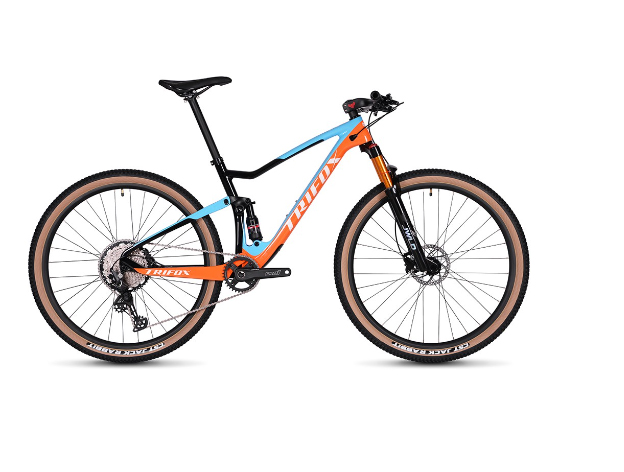
Choosing the right trail mountain bike is crucial for maximizing your outdoor adventures. With the vast array of options available, it can be challenging to determine what features and components are essential for your specific needs.
Understanding the Types of Mountain Bikes
Before diving into specifics, it's important to understand the different types of mountain bikes available:
Full Suspension Mountain Bikes
Full suspension bikes feature both front and rear shock absorbers, offering a smoother ride over rough terrain. They provide better control and comfort, especially on downhill trails or rugged paths with numerous obstacles.
Hardtail Mountain Bikes
Hardtail bikes have a front suspension fork but no rear suspension, making them lighter and more efficient on smooth trails and climbs. They are often preferred for cross-country riding due to their simplicity and lower maintenance requirements.
Customizable Options
Some manufacturers, like Trifox, offer customizable mountain bike options. This allows you to tailor your bike to your exact specifications, choosing each component to suit your style and riding preferences.
Key Components to Consider
When selecting a 29-inch trail mountain bike, pay close attention to the following components:
Bike Frames
The frame is the backbone of your bike, determining its overall strength, weight, and ride quality. Carbon fiber frames, such as those available from Trifox, are popular for their lightweight yet durable construction. Models like the Pioneer and M2 provide excellent performance and reliability.
Wheels and Tires
Wheels and tires significantly impact your ride's comfort and handling. Look for 29-inch wheels with tubeless-ready tires for improved traction and reduced risk of punctures. The larger wheel size helps roll over obstacles more easily, providing a smoother ride.
Suspension Forks
A high-quality suspension fork is essential for absorbing shocks and bumps on the trail. Adjustable forks allow you to fine-tune the suspension based on the terrain you're riding, ensuring optimal performance.
Handlebars and Stems
Handlebars and stems affect your bike's handling and comfort. Wider handlebars provide better control, while adjustable stems allow you to customize your riding position for maximum comfort.
Seatposts and Saddles
A comfortable saddle and adjustable seatpost are crucial for long rides. Dropper seatposts are a popular choice for trail riding, enabling quick height adjustments on the fly.
Drivetrain and Brakes
Choose a drivetrain that offers a wide range of gears to handle various terrains. Reliable hydraulic disc brakes are a must for consistent stopping power in all conditions.
Essential Accessories
To enhance your biking experience, consider these accessories:
Computer Mounts and Bottle Cages
A computer mount allows you to track your ride data, while bottle cages ensure you stay hydrated on long journeys.
Seatpost Clamps and Handlebar Grips
Secure your seatpost with a reliable clamp and improve your grip with comfortable handlebar grips or tape.
Bike Pedals
Choose pedals that match your riding style. Clipless pedals offer better power transfer, while platform pedals provide more freedom of movement.
Bundles and Deals
Many brands, including Trifox, offer bundle deals that combine essential components at a discounted price. Bundles like Frameset & Wheelset or Frameset & Handlebar can provide significant savings while ensuring compatibility and performance.
Shop with Confidence
When purchasing your new mountain bike, consider the following benefits offered by reputable retailers like Trifox:

Conclusion
Choosing the perfect 29-inch trail mountain bike involves understanding your needs, selecting the right components, and considering additional accessories to enhance your riding experience. By carefully evaluating your options and taking advantage of bundles and deals, you can find a bike that meets your requirements and provides endless hours of adventure on the trails.
For a wide range of high-quality mountain bikes and components, visit Trifox and explore their extensive collection today.
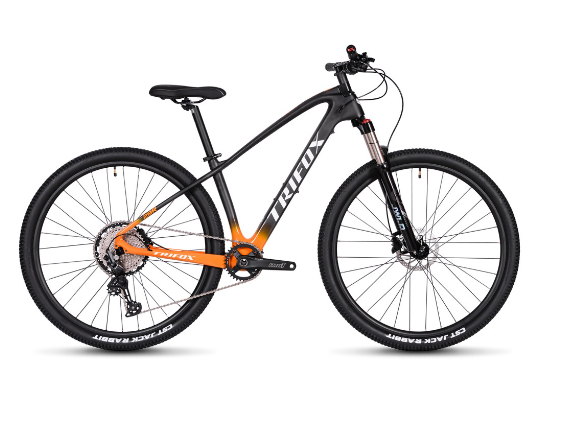
Choosing the perfect size M bike for your riding style is an essential step towards a comfortable, efficient, and enjoyable cycling experience. Whether you're a seasoned rider or new to the biking world, understanding how to select the right bike size can greatly enhance your performance and overall enjoyment of the ride.
Understand Your Riding Style
The first step in choosing the perfect bike size is to clearly define your riding style. Are you into road biking, mountain biking, or hybrid cycling? Each style demands specific bike features and sizes for optimal performance. Road bikes, for instance, often require a snugger fit for aerodynamics and speed, while mountain bikes offer a bit more room for maneuverability on rough terrains.
Know the Size Chart
Bike sizes are typically categorized by frame size, which is measured in centimeters for road bikes and inches for mountain bikes. An M-size bike generally corresponds to a medium size, which is usually around 54-56 cm (21-22 inches) for road bikes and 17-18 inches for mountain bikes. However, these measurements can vary slightly between manufacturers, so it’s crucial to check the specific size chart provided by the bike brand.
Measure Your Height and Inseam
Your height and inseam length are pivotal measurements when determining the right bike size. To measure your height, stand against a wall without shoes and mark the top of your head to get an accurate measurement. For your inseam, stand with your back against the wall and a book between your legs—mimicking a bike seat—and measure from the top of the book to the floor. These measurements will help you find a bike frame that allows for proper leg extension and comfortable reach to the handlebars.
Evaluate Bike Geometry
Bike geometry plays a significant role in finding the right fit. It refers to the angles and lengths of different bike frame parts, including the top tube, seat tube, and head tube. A bike with a longer top tube may suit riders looking for a stretched-out position, typical of racing or long-distance road biking. On the other hand, bikes designed for agility and comfort, like many mountain and hybrid bikes, often have a shorter top tube to facilitate an upright riding posture.
Consider Adjustments and Components
Even within the same size, bikes can offer different levels of adjustability. Seat height, handlebar height, and reach can often be adjusted to fine-tune the fit. Additionally, the choice of components such as the saddle, pedals, and handlebars can affect your overall comfort and performance. For example, wider handlebars may offer more control for mountain biking, while narrower bars could be preferable for road cycling.
Test Ride Different Bikes
Nothing beats the insights gained from a test ride. Visit your local bike shop and try out several M-sized bikes within your preferred type. Pay attention to how each bike feels in terms of comfort, ease of pedaling, handling, and reach to the components. During the test ride, consider aspects like:
Comfort: Are you able to ride without straining your neck, shoulders, or back?
Control: Do you feel in command of the bike even when turning or going over bumps?
Efficiency: Can you pedal smoothly and effectively without feeling cramped or overly stretched?
Seek Professional Fitting
If you're investing in a high-end bike or if you plan to spend significant time riding, consider getting a professional bike fitting. A bike fitting expert will take comprehensive measurements and adjust your bike to fit your body dimensions precisely. This service can greatly improve comfort, efficiency, and prevent injuries associated with poor bike fit.
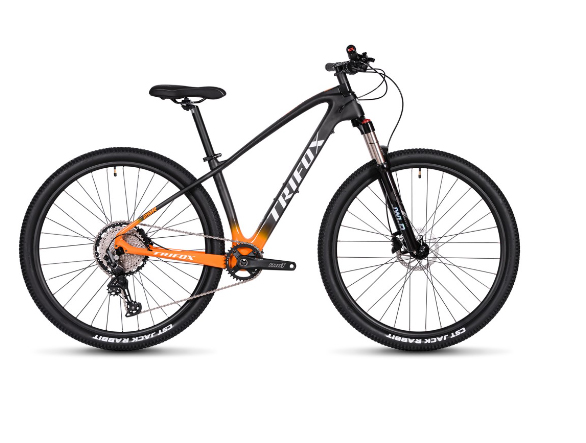
Final Thoughts
Selecting the perfect size M bike is a blend of art and science, requiring consideration of various factors tailored to your body dimensions and riding preferences. By understanding your riding style, knowing the size charts, taking accurate measurements, evaluating bike geometry, considering component adjustments, test riding, and potentially seeking professional fitting, you'll be well on your way to enjoying countless miles of comfortable and rewarding cycling experiences.
Remember, the right bike is not just about size; it's about the perfect synthesis of fit, form, and function to complement your unique riding style.
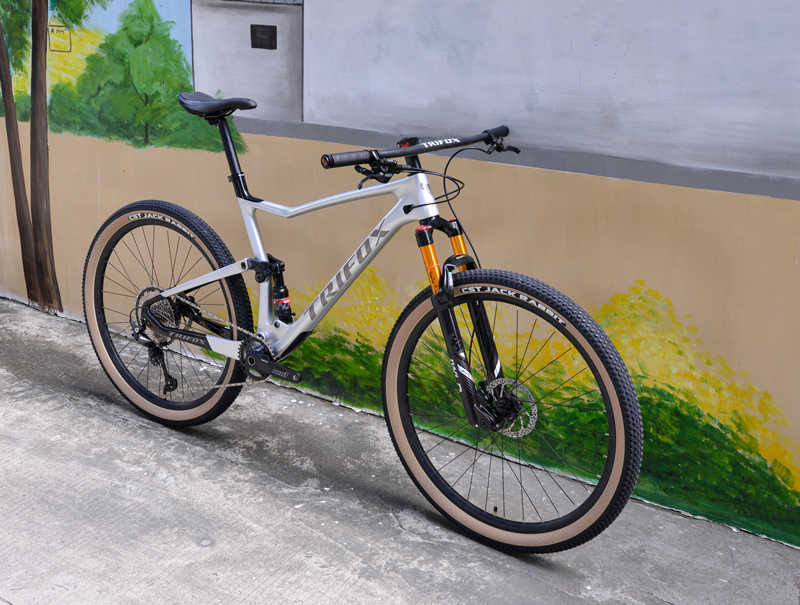
In the vast and evolving world of mountain biking, where the thrill of the ride meets the challenge of the terrain, having a bike that can conquer any trail is paramount. Enter the Pioneer bike, a marvel of modern engineering and design that promises to elevate your mountain biking experience to new heights. This full suspension bike, with its sleek carbon fiber frame and advanced components, is designed for riders who refuse to compromise on performance, no matter the terrain.
The Heart of the Pioneer: Carbon Fiber Frame
At the core of the Pioneer bike's exceptional performance is its carbon fiber frame. Known for its strength, durability, and lightweight properties, carbon fiber is the material of choice for high-performance bikes. The Pioneer takes this a step further by incorporating a dual suspension system with 110/115mm of travel, ensuring that shock absorption and responsiveness are maximized across all terrains. Whether you're navigating rocky paths, steep descents, or challenging climbs, the Pioneer bike remains unfazed, offering a smooth and controlled ride.
Advanced Suspension for Unmatched Performance
Suspension technology plays a crucial role in the performance of a mountain bike, and the Pioneer bike is equipped with a setup that's tailored for excellence. This advanced suspension system not only absorbs the shocks and bumps of uneven trails but also enhances the bike's handling and traction, allowing for a more confident and aggressive riding style. With such capabilities, riders can push their limits and explore new trails with ease.
Geometry and Adjustability: Tailored to Your Riding Style
One of the most notable features of the Pioneer bike is its ability to make small geometry adjustments. This level of customization ensures that riders can fine-tune their bike's setup to match their riding style and the specific demands of any trail. Whether you prefer a more aggressive stance for speed and performance or a more relaxed setup for comfort and endurance, the Pioneer bike adapts to your needs.
Equipped for Excellence: SHIMANO Components and More
No high-performance bike is complete without top-of-the-line components, and the Pioneer bike delivers in this regard. Equipped with SHIMANO MT200 components and a SHIMANO M6100 12-speed setup, it offers a wide range of gears to tackle any slope with ease. Additionally, the bike features wider CST 2.25'' wheels and carbon integrated bar/stem, enhancing its stability and steering precision. The guided internal cable routing not only contributes to a sleek aesthetic but also ensures a quieter ride on the trail.
Beyond the Bike: TrifoxBike's Commitment to Quality and Service
Choosing the Pioneer bike also means becoming part of the TrifoxBike family, a company renowned for its commitment to quality and customer satisfaction. With offerings that include complete bikes, frames, wheels, components, and accessories, TrifoxBike caters to all your cycling needs. Moreover, customers can enjoy benefits such as 24/7 live chat support, free shipping, and secure payment options, making the purchase and ownership experience as smooth and enjoyable as the ride on a Pioneer bike.
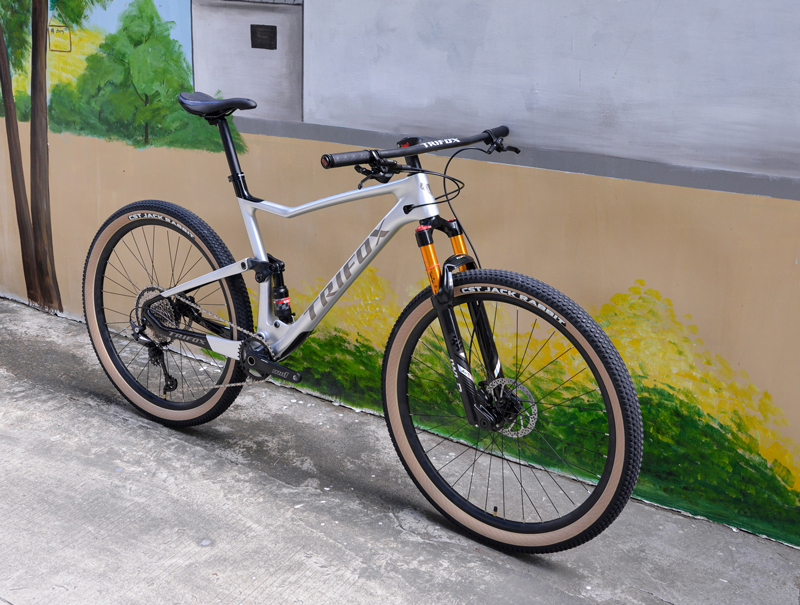
Conclusion: The Ultimate Trail Companion
The Pioneer bike stands out as a beacon of innovation and performance in the mountain biking world. Its combination of a carbon fiber frame, advanced suspension, customizable geometry, and high-quality components makes it a formidable tool for conquering any trail. Whether you're an experienced rider seeking to push your limits or a newcomer eager to explore the wonders of mountain biking, the Pioneer bike offers a ride that's both exhilarating and dependable.
With the backing of TrifoxBike's exceptional service and support, embarking on your next adventure with the Pioneer bike promises not just a journey through the trails, but the discovery of new frontiers in performance and enjoyment.

























































